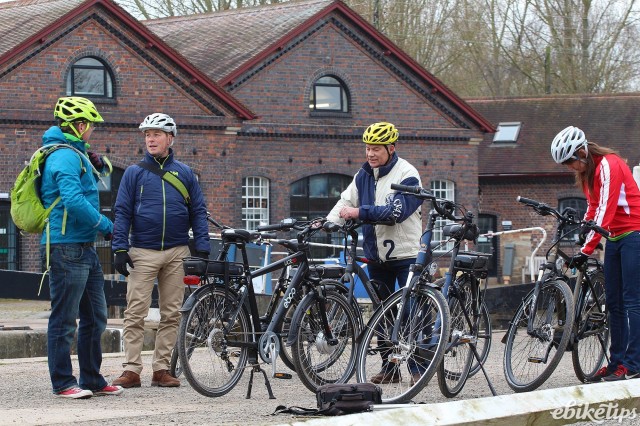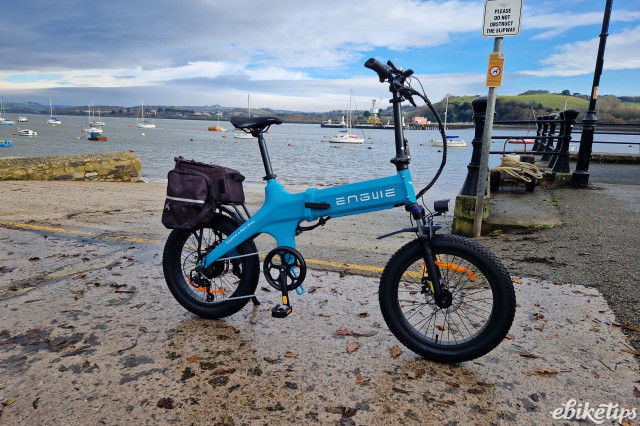The law surrounding electric bikes, and the enforcement of it, have seen a move in recent years and months towards a much clearer picture.
Until recently e-bikes in the UK were technically subject to the Electrically Assisted Pedal Cycles (EAPC) regulations that dated back to the 1980s. These stipulated that the maximum power of the motor was restricted to 200W, and the maximum assistance speed was 15mph. Any person over 14 years of age could ride one, with no stipulations for extra training or safety equipment. Assistance could be either by pedal assistance or by a throttle, independent of the pedal system (twist-and-go).
In reality, that law has long been considered out of date and policing of e-bikes was largely centred around their compliance with the EU law for pedelecs, EN15194. That legislation allows for a motor with a maximum continuous rated power of 250W. Twist-and-go isn’t something that’s allowed under the legislation that classes powered bikes as bikes, although here the terminology gets a little obtuse. Bikes that meet the type requirements, and are classed as bicycles under law, are called pedelecs. Bikes that don’t meet the requirements are called e-bikes. Which is what we tend to call e-bikes. Confused yet?
In response to the fact that it was the EU law that was being enforced on the ground, a November 2014 consultation sought to update the UK’s EAPC legislation. That consultation resulted in revised EAPC guidelines which came into force in April 2015. Here are the basics:
Your bike must have pedals
Okay, that’s fairly obvious. But anything that doesn’t actually have pedals capable of propelling it can’t be classed as an e-bike under UK law.
Motor: 250W maximum
Your e-bike must have a motor with a continuous rated power of no more than 250W. “Continuous rated power” is a phrase that gives manufacturers of drivetrain systems a bit of wriggle room in terms of how much assistance a motor will give in high-output mode as you dash away from the lights. It’s defined as “‘maximum continuous rated power’ means the maximum thirty minutes power at the output shaft of an electric engine as set out in UNECE regulation No 85”, in case you’re interested. Many setups will have a peak power output that’s above that 250W ceiling.
Maximum assistance speed: 15.5mph
The electrical assistance must cut-off when the vehicle reaches 15.5 mph. That’s effectively the same as the EU law, which limits it to 25km/h. But we do like our imperial measurements. We’ve never had a bike from a major manufacturer that doesn’t more or less comply here, although some take (slight) liberties with that upper limit in the higher assistance modes.
Minimum age: 14 years
You can’t ride an e-bike if you’re under 14. Sorry kids! In most other EU countries there’s no minimum age for the use of an electric bike.
Twist and go: allowed, with caveats
This is an area where the EAPC legislation does differ from the EU rules. “Because of the particular benefits for elderly and disabled users, pedal cycles providing electrical assistance without use of the pedals - usually called "Twist and Goes" - are included in the above GB classification provided they are capable of pedal operation and comply with the above restrictions on maximum motor power and assistance cut-off speed”, says the Government’s information sheet. So, you can have a throttle so long as you also have a pedal-assist mode. In the rest of the EU, that isn’t allowed, except for speeds up to 6km/h (as a walking mode to help you move your bike around). Although you can have a throttle that works so long as the pedals are turning. I know, we’re confused too.
“Off road” higher power modes: not allowed
This is an important one to note. There’s been a culture in the UK of offering higher-power modes on e-bikes and marketing them as “off-road” modes, only to be used on private land; public rights of way are subject to the same laws governing bikes as roads are.
The EAPC consultation and subsequent revision has made it clear that this isn’t on: Any e-bike which offers a continuous rated power of more than 250W is subject to type approval, and needs to be registered, insured and taxed. You’ll need to wear an approved motorcycle helmet, too. It’s a moped, basically.
In other parts of Europe, there’s a separate classification for higher power pedelecs. Speed- or S-pedelecs are limited to 45km/h (28mph) and generally use motors with a continuous rated power of 500W. Exact rules for their use vary depending on which European member state you’re in (and some don’t recognise them) but generally speaking the bikes require type approval, and some form of registration is required, as is a helmet. Road use is permitted, with some countries now looking at providing segregated infrastructure for S-pedelecs too: Germany recently opened its first stretch of e-bike ‘autobahn’ [link]
The UK doesn’t currently acknowledge S-pedelecs, although discussions in this area are ongoing.
Other bike rules apply
An e-bike that meets the above stipulations is classified as a bike under law, and that means that it’s subject to the other rules that apply to bikes when sold. Like a normal bike, between the hours of sunset and sunrise any e-bike must be fitted with front and rear reflectors, pedal reflectors and lights that meet the Road Vehicle Lighting Regulations for bicycles. The brakes “must comply with paragraph 4.6.8 of British / European / International standard BS EN ISO 4210-2:20148, or any equivalent European standard, and be maintained in efficient working order”.






